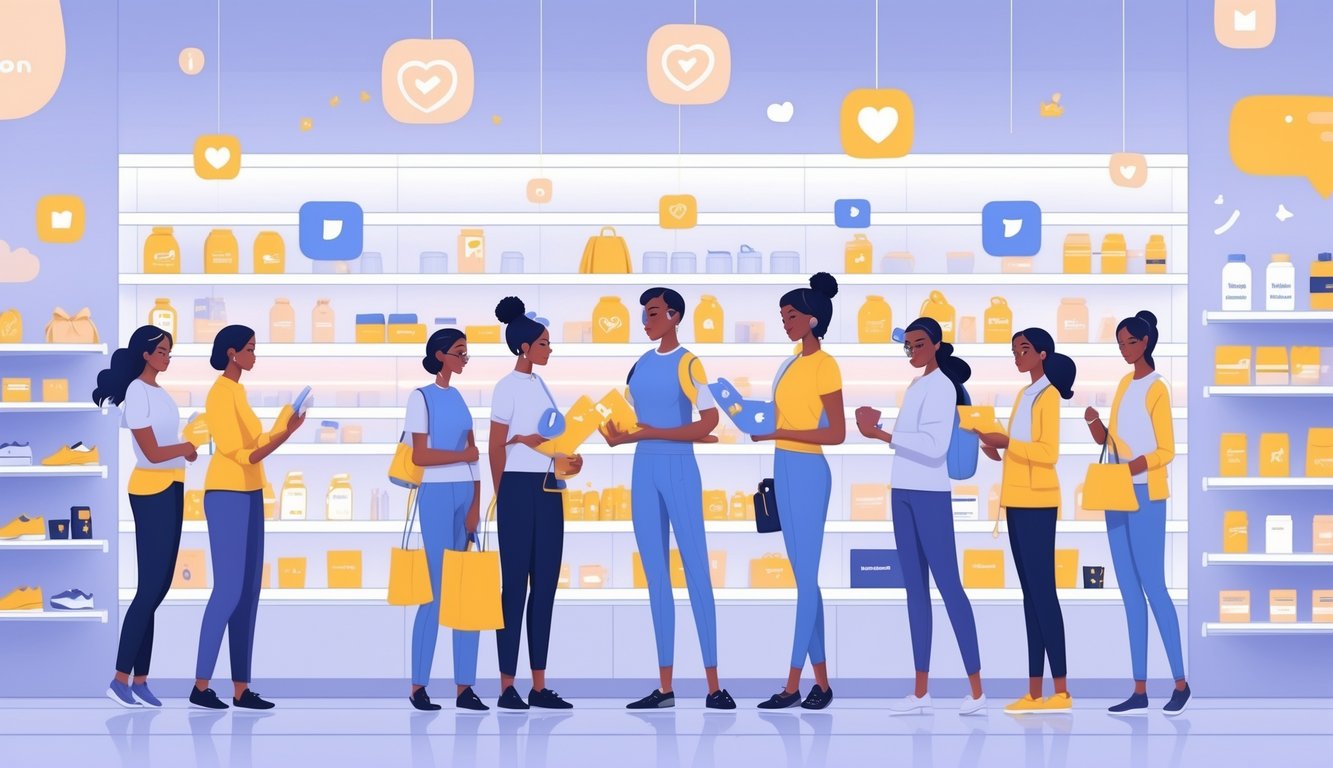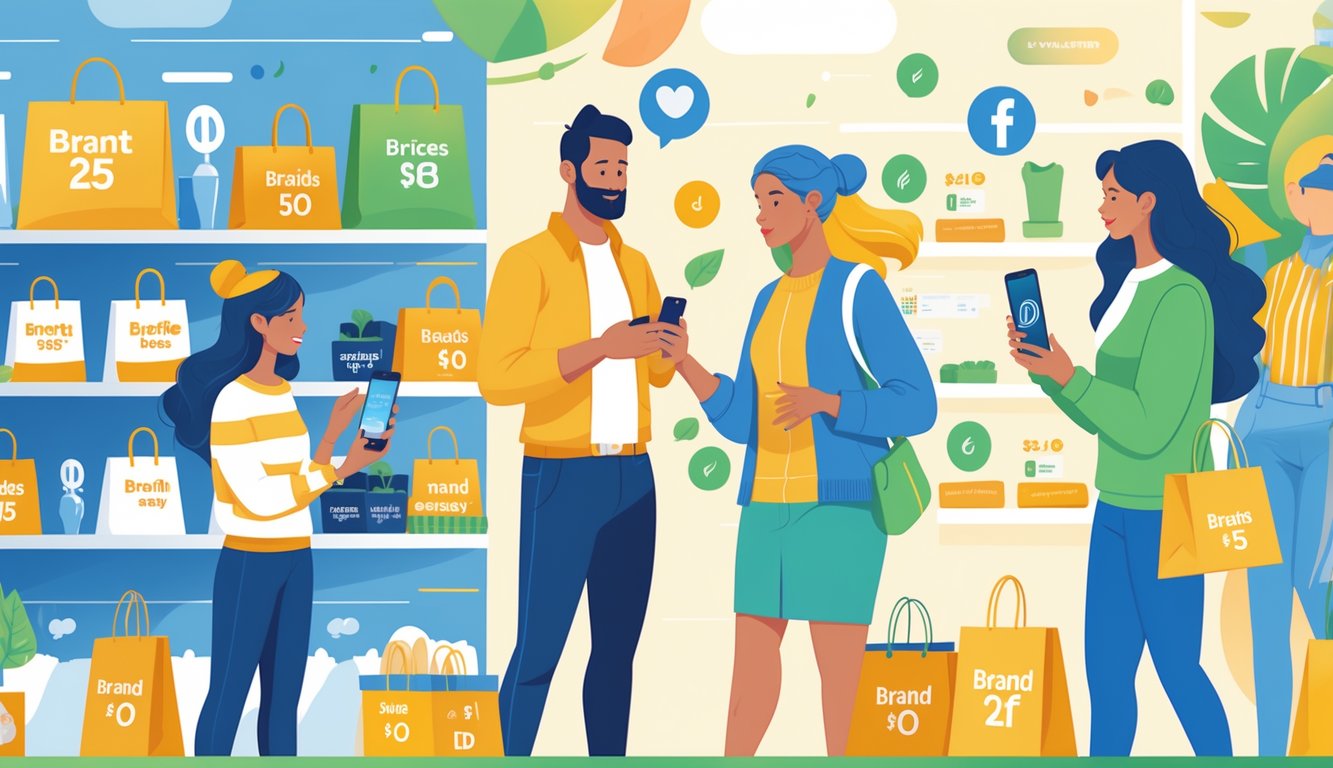
Okay, so here’s what I keep tripping over—TikTok at midnight, phone about to die, and there’s another influencer “haul” promising some magical discount. I can’t help but notice: people aren’t just burning cash for the hype anymore (or, I dunno, free shipping that’s never really free). It’s like this weird obsession with squeezing out every ounce of value. I saw a stat—44% of marketers, apparently, lose sleep over finding the “right” influencer. But the brands that actually team up with creators who care about, like, real perks (hello, multi-use pants, or “we actually tell you where the stuff comes from”) just… outpace the dinosaurs. Influencer brands that actually walk the walk? They’re leaving the old guard in the dust, and I swear, most retailers are still clueless.
Ever catch yourself watching micro-influencers rave about, I don’t know, a $12 t-shirt instead of some luxury bag? Or makeup that doesn’t melt off by lunch? (Dermatologists must have a group chat about how nobody checks for cruelty-free labels, right?) You’re not losing it. Brands track social sentiment like it’s the stock market—about 1 in 5 are glued to live dashboards. Still, even with all the AI in the world, no one can predict how fast TikTok will roast a fake discount. Some brand once sent me three “exclusive” codes in an hour—did I buy? Nope. I just rolled my eyes.
There’s no trophy for “best collab,” but I’m out here bookmarking creators who toss in actual extras—like, free tutorials, Q&As with founders, loyalty hacks (not that anyone’s cracked the “stack codes” puzzle; I just get that “already applied” error and rage-quit). The whole scene shifted: it’s not about chasing likes, it’s about showing value you can actually use. Shoppers aren’t just watching—they’re comparing, and the influencer-backed brands who solve real problems? They’re filling carts while everyone else is stuck wondering why their numbers are flatlining.
Why Influencer Brands Are Winning Value-Focused Shoppers

Here’s me, mug in hand, scrolling through the same old story—shoppers clinging to influencers for tips on everything from $20 retinol to, like, suspiciously cheap sneakers. It’s not nostalgia for old ads. Something’s just… changed. People’s priorities are all over the place, and influencer-brand mashups seem to tap into “value” in ways that leave legacy brands scrambling.
Understanding Shifting Consumer Priorities
I keep scribbling “value” in my notes every time I talk to Gen Z or, whatever, late millennials. They’re out here doing cost-benefit math with every swipe. Ryan Detert—some CEO I met at a conference where the AC was broken—told me creator-first brands win because algorithms want faces, not logos. He said engagement rates double or triple compared to corporate posts. I mean, my LinkedIn is full of proof—there’s this weird pro-meets-consumer energy you can almost smell.
And honestly, it’s not about coupons. It’s more like, “Who do I trust to tell me if this protein powder is garbage or just tastes like a candle?” People trust messy TikTok stories way more than influencer fatigue would have you believe. Forbes says nearly two-thirds of online shoppers call influencer content “helpful” for purchases. I guess we all love advice from strangers who seem, like, 70% reliable.
Nobody begged for 15-part Instagram hauls, but when every dollar counts, influencers drive group decisions. “Are they getting paid? Is this a dupe?” The answers are always fuzzy—maybe that’s why it feels honest.
The Value Proposition of Influencer-Driven Brands
Ecommerce stats haunt me. Over half of ecommerce brands now throw at least 20% of their budget at influencers. Not to sound like an accountant, but $266.92 billion is the influencer industry this year. That’s not just a blip—maybe it’s payback for years of faceless ads, or maybe people just want the same lipstick Ashley from Toronto uses.
What actually matters? Value you can see. Discount codes are everywhere, but what really sells is when an influencer breaks down if a blazer survives the wash, or if you’re just paying for a fake Italian tag. I’ve watched micro-influencers triple conversion rates—probably because regular people look nothing like stock photos and never say “investment piece.”
Here’s something weird: most influencer-linked purchases happen after 9pm, right when my inbox fills with abandoned carts and panic promo code hunting. There’s a term for it—paradox of choice fatigue. A Shopify strategist told me (she sold me linen pants I regret). I never get a straight answer, but value-focused shoppers always circle back to the person, not the brand.
Role of Authenticity in Influencer Marketing
Honestly, nothing kills a sale faster than fake. I mean, yeah, good lighting helps, but if I see an influencer dodge a question about price or results? I’m out. Wallet stays shut.
Building Trust Through Honest Communication
You can’t sell with forced hype. Over 80% of social marketers admit influencer trust makes or breaks a campaign (Sprout Social, 2024). I’ve seen loyalty vanish in a day after buyers spot a canned, commission-y pitch. Nothing ruins a beauty launch faster than “I just LOVE everything!” from someone who swapped sponsors last week.
Clients keep asking for testimonials that “sound normal.” Here’s what works: just say what you think, even if it’s bad. If your coconut candle barely smells, candle nerds want to know. Why act like every $12 tee is life-changing? I test stuff, give numbers (“held up six washes, avoid white—pills immediately”), and suddenly engagement jumps. More buyers stick around when I call out flaws. Maybe that’s obvious, but brands still miss it.
Sometimes I mess up—mixed up lip oil shades once, apologized, but everyone ignored that and just liked my honest take (“Coral is sheer, not sticky, was confused—anyone else layer with blush?”). Weirdly, that built more trust.
Creating Long-Term Customer Relationships
Everybody obsesses over loyalty metrics, but does anyone actually agree on how to measure it? I’ve seen loyalty last a year from one relatable Insta Story, then collapse after a single TikTok callout. People remember patterns, not staged moments—they’ll remember if you say, “This self-tan stinks, but fades evenly,” instead of just selling.
The only thing that sticks? Consistent honesty. I spent months pushing mid-priced activewear, sharing pros and cons (pocket stitching always snags after wash ten, seriously). My audience shifted—more questions, more repeat buyers, fewer unfollows when codes expired. Someone DM’d, “I know you’re paid, but at least you’re not a suck-up.” That’s real loyalty: slow to earn, easy to lose.
Honestly, I think value-focused shoppers have built-in BS detectors—practical E-E-A-T, if you buy Moburst’s latest meta-analysis on sustainable partnerships beating “high-gloss” stunts. Not everyone loves the chaos of full honesty, though, and maybe that’s why some brands burn through ambassadors faster than TikTok cycles trends—no real connection, no loyalty, no lasting value.



